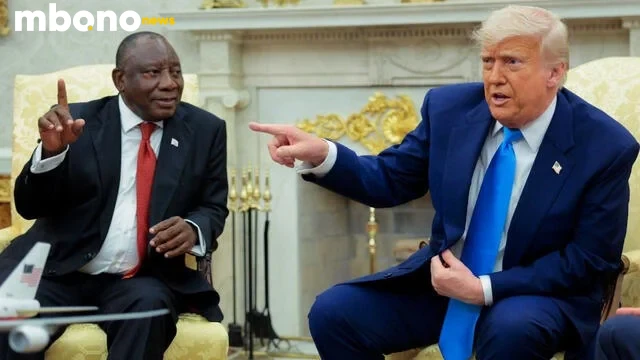In a dramatic and highly controversial move during a closed-door meeting at the White House, U.S. President Donald Trump presented South African President Cyril Ramaphosa with video clips of Julius Malema and Jacob Zuma — in an attempt to validate his claims of a so-called “white genocide” unfolding in South Africa.
The clips, reportedly compiled by Trump’s advisors from speeches and rallies by Malema and Zuma, featured fiery rhetoric on land expropriation, anti-Western sentiment, and racially charged calls for economic revolution.
“This is your opposition — this is what’s happening, right?” Trump reportedly asked Ramaphosa, after playing the footage. “This is why people are worried.”
South African Delegation Stunned
Sources close to the South African delegation described the moment as “bizarre” and “borderline confrontational.” Ramaphosa maintained his composure, but his ministers were visibly unsettled — with one reportedly muttering, “This is not diplomacy. This is political theatre.”
The videos featured EFF leader Julius Malema delivering his now-infamous call for land seizure “without compensation,” alongside Jacob Zuma, former president and leader of the controversial new MK Party, questioning the legitimacy of South Africa’s current democratic order.
Ramaphosa Pushes Back with Facts and Mandela
President Ramaphosa responded calmly but firmly. He reminded Trump that South Africa remains a constitutional democracy with no policy of racial persecution, stating:
“We were taught by Nelson Mandela that whenever there are problems, people must sit at the table and talk. That’s how we govern — not with fear, but with dialogue.”
He pointed to crime statistics showing that of the 26,000+ murders in South Africa last year, only 44 were linked to farms, with both Black and white South Africans among the victims.
Why Trump’s Tactic Matters
Trump’s decision to use opposition party leaders to make a diplomatic point is unprecedented — and risky. By airing political material normally confined to South Africa’s internal affairs, he not only inserted himself into the country’s heated domestic debate, but also amplified the voices of populist figures who are not part of its current government.
Critics say Trump’s actions distort the reality on the ground and fuel international misinformation. Analysts also warn that such tactics could strain U.S.-South Africa relations — especially as Ramaphosa seeks to stabilize a nation already politically polarized.
Conclusion: A Meeting of Two Worlds — and Two Realities
Trump’s use of edited political footage turned a high-level diplomatic encounter into something more resembling a media ambush. But President Ramaphosa’s measured response — grounded in Mandela’s legacy and democratic principles — may have blunted the impact.
As South Africa navigates land reform, economic justice, and rising populism, the world’s gaze — often oversimplified — remains fixed. But the truth, as this meeting showed, is more complicated than any viral clip.
